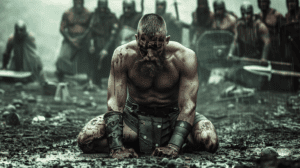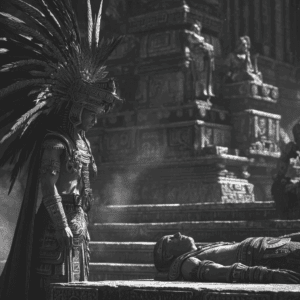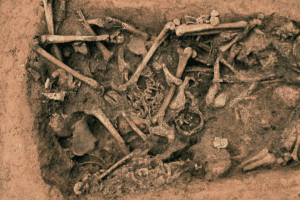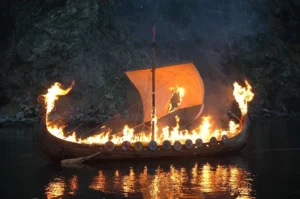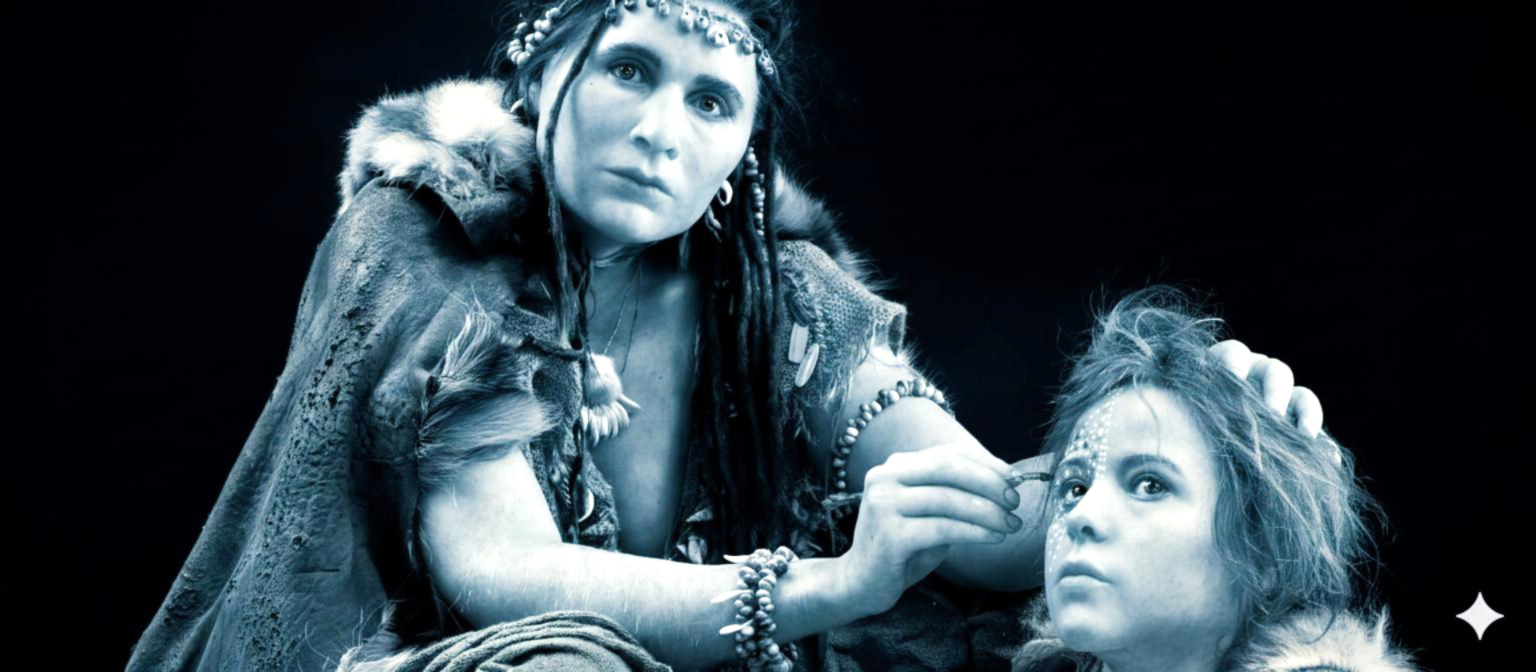
They didn’t just eat the dead in Gough’s Cave, they drank from them.
Gough’s Cave- 15 Thousand Years Ago
The Cave That Remembered
What happened here, it is important to say, was not carried out by primitive people. These were modern humans in every sense.
They created art, music, and had abstract thought. They were families, like us.
Their striking faces and good builds would blend seamlessly into any modern crowd today. Proportioned like us, expressive like us, and very human like we are.
If one stepped through a time capsule into a London street, one might glance at their clothing, but their faces would tell you nothing.
What makes Gough’s Cave so unsettling is not that monsters did this.
It’s that we did.
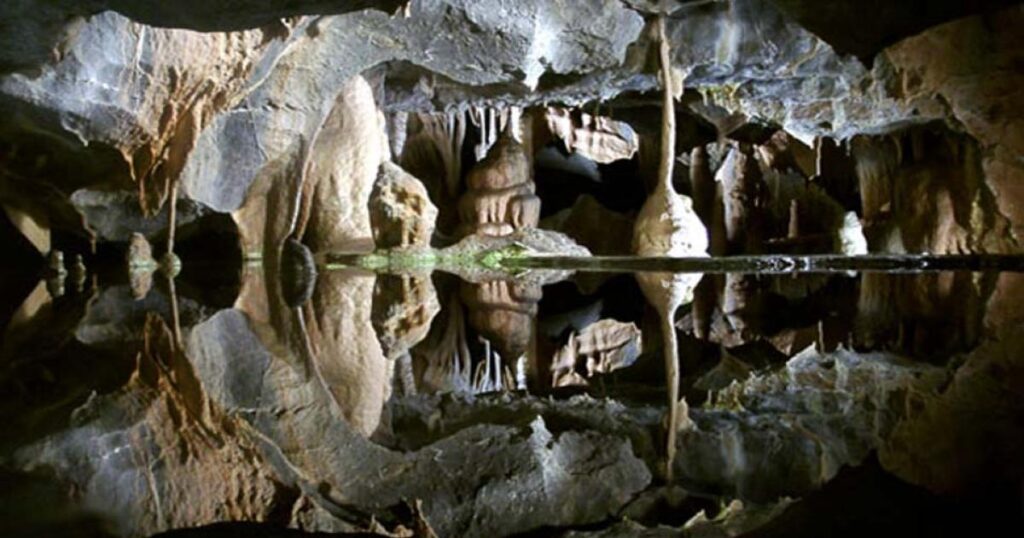
Archaeologists Realised They Had Found Something Extraordinary
The first torchlight peered through the dark like a knife. The atmosphere was heavy. Dampness clung to the walls of Gough’s Cave highlighted by the steady drip of ancient water that patterned the rocks around it. In this very moment, as always, archaeologists experience true time-travelling. It is an excitement too complex to describe and a feeling they often cannot name.
The Bones Were Laid In Strange Patterns
When the archaeologists brushed away the soil, they uncovered fragments of skull, long bones, and the faint trace of order in the earth.
It was careful, deliberate, and somehow unsettling.
The soil told its story slowly. First the animal bones, then the human ones, lying side by side. It was not clear, at first, where the feast ended and the people began.
Something had happened here, and whatever it was, it wasn’t simple death.
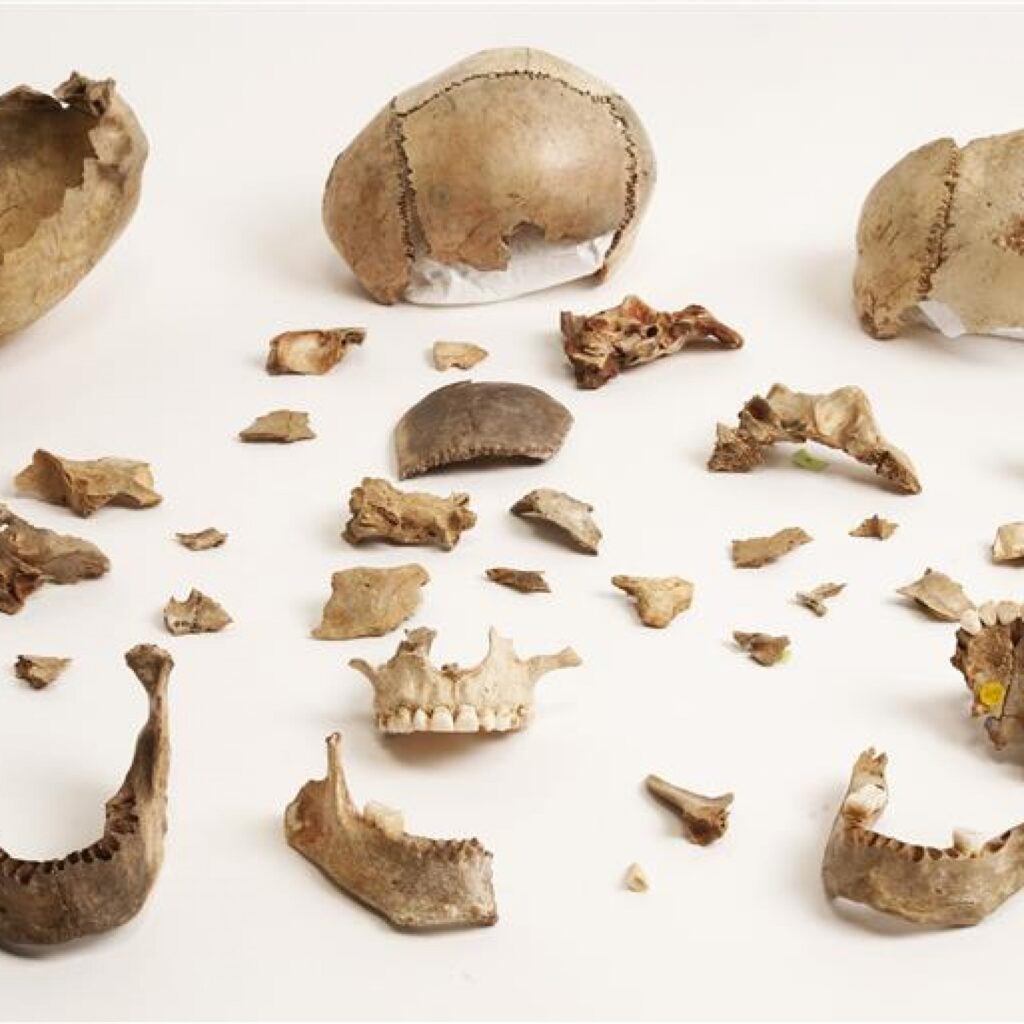
Fifteen Thousand Years Ago in England
Long before Britain was an island, before the sea filled the Channel, this cave in Somerset sheltered a band of Ice Age hunters.
They were the Magdalenian people, early modern humans, the same species as us.
If you found this story interesting then check out the tale of Cheddar Man HERE
They Enjoyed A Family Life And Even Hobbies Like Us
They hunted reindeer and horse across frozen valleys, carved tools from flint and antler, and left behind carvings of birds, fish and human forms. They made jewellery, used red ochre to decorate the dead, and lived in close-knit family bands. They were social, good-looking, and strong.
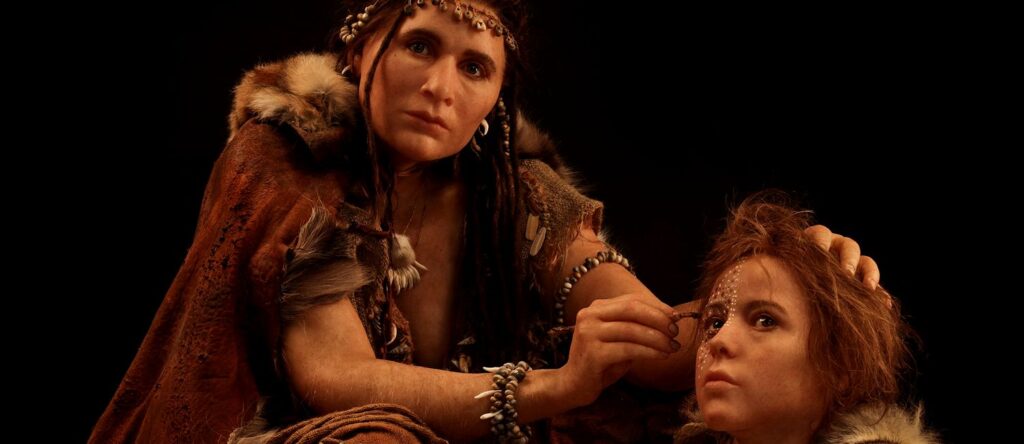
Intelligent People With Strong Survival Instincts
Their campsites show evidence of hide-working, tool manufacture, and careful curation of the landscape around them. They knew which valleys the herds favoured, which stones would flake cleanest, and where water pooled in summer.
Their world was harsh and cold, but deeply social. Firelight meant survival, and every death was a crisis. A fallen hunter, a dying elder, a child lost to cold — all demanded ritual.
The Discovery in the Dark
Gough’s Cave lies within the limestone heart of Cheddar Gorge. [see grisly bit The Cheddar Man]. The first discoveries were made in the 1880s, when local labourers found human bones mixed with Ice Age animal remains. But the real story began almost a century later.
Archaeologists From The Natural History Museum
In the 1980s, archaeologists from the Natural History Museum and University College London began systematic excavations, removing layers of sediment preserved for millennia.
What they found was a jigsaw of human and animal remains, intermingled, meticulously marked.
Under magnification, the cut marks told their own story. They were too clean, too consistent and too dainty to be the result of violence or accident.
These people had butchered their dead, but with the same practised skill they used on the animals they hunted.
The Ritual of Flesh
Among the remains were adults and children, their bones bearing identical patterns of modification. Every mark followed a pattern. Cuts were traced along muscle lines, long bones were split lengthwise to extract marrow, and the skulls were shaped into smooth, symmetrical bowls. There were no signs of struggle or random hacking.
Nearby lay bones of horse and reindeer treated in precisely the same way.
The work was methodical, ceremonial. Each act appeared to follow an established sequence: skinning, dismemberment, marrow extraction, shaping.
To the Magdalenian mind, perhaps there was no boundary between creature and kin, between nourishment and remembrance.
To consume the body might have been to preserve the spirit. Even when that body was of a 3-year old child.
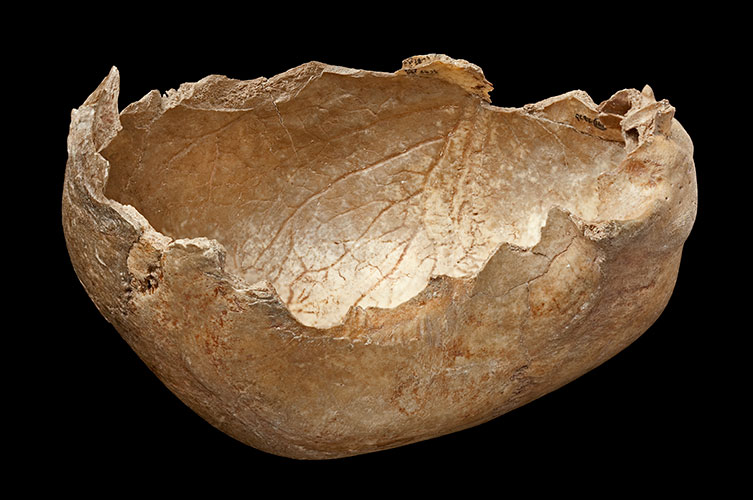
Modern Science Confirms the Ritual
In 2011, scientists re-examined the bones using high-resolution imaging. Their findings confirmed what earlier researchers had suspected — this was no survival cannibalism. The butchery was systematic, and the crafting of the skull cups required deliberate, practised precision.
- The skulls were defleshed, cleaned, and trimmed around the edges.
- The skull bases were removed carefully, not smashed.
- The edges were bevelled smoothly, showing deliberate craftsmanship rather than crude butchery.
- There were no random fractures — every cut followed a pattern consistent with skilled processing.
The manner of processing the skull after death suggests there were used as a drinking cup. https://doi.org/10.1371/journal.pone.0017026
The evidence against starvation was clear. Animal remains at the site showed these people had access to abundant game. Reindeer, horse, and red deer bones littered the cave floor, all bearing the same butchery marks as the human remains.
The Spine-Chilling Facts
They were not starving. They were not desperate. The herds were plentiful, the hunting successful. They chose to process human bodies not from necessity, but with a purposefulness that is spine-chilling today.
Every stroke of the flint blade followed the same anatomical logic. Even the edges of the skulls had been bevelled to a uniform thickness. These were not trophies made in panic; they were ritual objects shaped through experience and belief.
The researchers noted that animal and human bones were deposited together, suggesting that both were part of the same ceremony — an offering, a meal, or something stranger still.
The Bodies Beneath the Stone
Some skulls were larger and more finely worked than others. Perhaps they belonged to elders, to those whose wisdom the living wished to preserve.
Their bones show the same deliberate preparation, the same reverence. These bodies were not abandoned; they were transformed.
Drinking From These Skulls Kept Their Most Dearest Near
We might imagine them drinking from these skulls to keep spirits near, or to take wisdom into their own bodies. In the half-light of the cave, the act may have felt sacred. Fire flickered on wet stone, and hands lifted the smooth rim of bone. The ceremony might have been both terrible and tender. A final meal shared with the dead.
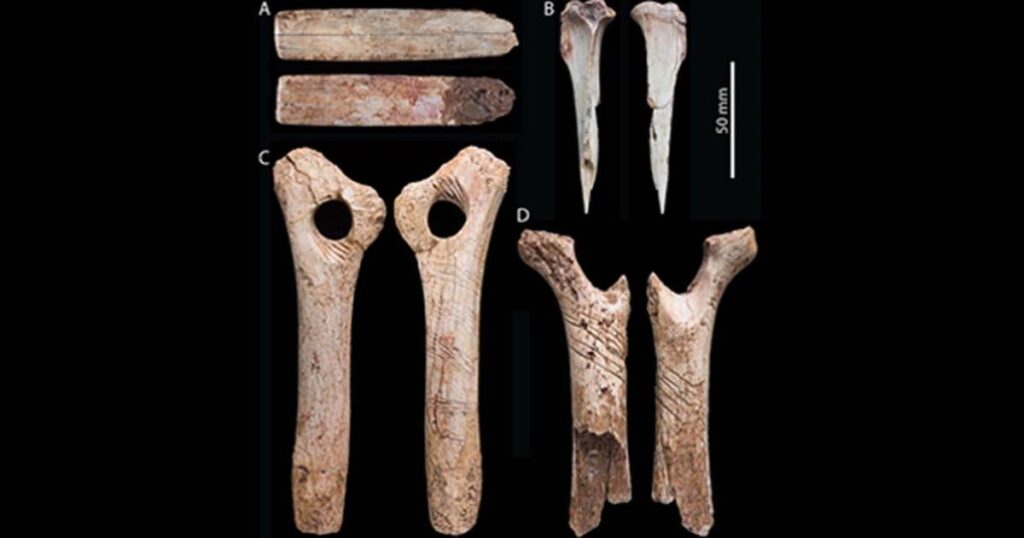
The Mind of the Magdalenian
We look at these remains and see horror. They looked at them and saw continuity.
In a world ruled by hunger, cold and loss, death was not an end but a passage to something else, of which we are not sure.
As throughout history, people seemed to believe that flesh returned to the living, the spirit to fire or air and the bones left to the earth. It’s left for us to find them and try to tell their story.
Archaeologists often find traces of ritual behaviour in Ice Age sites: red ochre, deliberate arrangement of bones, and carvings buried beside the dead. But Gough’s Cave stands apart because the transformation was physical — the literal taking of one body into another. The act of cannibalism.
To modern eyes, it feels unthinkable. To them, it was devotion.
Every culture builds a bridge between the living and the dead. Ours uses relics, ashes, communion, and remembrance. They used the body itself.
They ate what they loved, so it would never leave them.
An Ancient Form of Cannibalism Had Taken Place
It appeared they ate their dead as an act of reverence, a form of ritual. We cannot say for sure – fifteen thousand years leaves no stomach contents to examine – but we do know they treated human bodies in precisely the same fashion as the animals they ate. The cut marks are identical. The marrow extraction follows the same pattern.
That same instinct endures in quieter forms. We speak of carrying the dead inside us. We consume bread and wine in their name. We touch their possessions for comfort. All of it echoes a single human urge: to turn grief into ritual, and ritual into meaning.
The Last Light in the Cave
Fifteen thousand years later, Gough’s Cave still breathes. Water drips through limestone, tracing the same paths it did when those skull cups were new. Visitors pass through the tourist lights, unaware that beneath their feet lies the oldest story ever told on this island.
We whisper words like savage and monster, forgetting that these people were us — intelligent, emotional, fragile. They feared loss, they honoured the dead, and in the echoing dark they found a way to make hunger holy.
When the archaeologists carried those skulls into daylight again, they weren’t just uncovering bones. They were touching the first spark of belief, and the cave remembers.
Further Reading & References
Primary Study
- Bello, S. M., Parfitt, S. A., & Stringer, C. B. (2011). Earliest Directly-Dated Human Skull-Cups. PLOS ONE 6 (2): e17026.
- https://doi.org/10.1371/journal.pone.0017026
Museum Source
- Natural History Museum, London (2011). Ancient Britons Made Skull Cups.
- https://www.nhm.ac.uk/discover/news/2011/february/ancient-britons-made-skull-cups.html
Context on Magdalenian People
- Bradshaw Foundation. The Magdalenian Culture – Ice Age Artists of Europe.
- https://www.bradshawfoundation.com/magdalenian/
Regional Background
- Cheddar Gorge & Caves Official Site. History of Gough’s Cave and Cheddar Man.
- https://www.cheddargorge.co.uk/explore/goughs-cave
Comparative Ritual Sites
- Smithsonian Magazine. Europe’s Earliest Ritual Cannibalism Revealed in Gough’s Cave.
- https://www.smithsonianmag.com/science-nature/goughs-cave-ritual-cannibalism-180977259/

